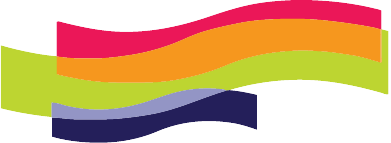Religious Education
We use Jigsaw RE as a vehicle for teaching religious education.
It uses a four-step enquiry approach:
The key question for each enquiry is such that it demands an answer that weighs up ‘evidence’ and reaches a conclusion based on this. This necessitates children using their subject knowledge and applying it to the enquiry question, rather than this knowledge being an end in itself.
Jigsaw RE focuses on critical thinking skills, on personal reflection into the child’s own thoughts and feelings, on growing subject knowledge and nurturing spiritual development and uses the following four-step model.
Step 1 – Engagement: Piece 1
 The human experience underpinning the key question is explored here within the children’s own experience, whether that includes a worldview/religion or not. So for example, a human experience underpinning the question, ‘What is the best way for a Sikh to show commitment to God?’ is ‘commitment’, so piece 1 aims to help all children resonate with the experience of ‘commitment’ in their own lives. Relating to this human experience acts as a schema to then help them better understand the worldview being studied (which may be very much outside of their experience).
The human experience underpinning the key question is explored here within the children’s own experience, whether that includes a worldview/religion or not. So for example, a human experience underpinning the question, ‘What is the best way for a Sikh to show commitment to God?’ is ‘commitment’, so piece 1 aims to help all children resonate with the experience of ‘commitment’ in their own lives. Relating to this human experience acts as a schema to then help them better understand the worldview being studied (which may be very much outside of their experience).
Step 2 – Investigation: Pieces 2, 3 and 4
 The teacher guides the children through the enquiry, children gaining subject knowledge carefully selected to assist their thinking about the key question.
The teacher guides the children through the enquiry, children gaining subject knowledge carefully selected to assist their thinking about the key question.
The plans for pieces 2, 3 and 4 cover the necessary subject knowledge to answer the enquiry questions.
This ensures that the acquisition of the factual information about the religion /belief system being studied is embedded and important, but can be applied critically so that it is not an end in itself.
Step 3 – Evaluation: Piece 5
 This piece draws together the children’s learning and their conclusions about the key question of that enquiry. There is an assessment opportunity included which gauges the children’s progress by using the descriptors provided. These are exemplified, and tracking and record sheets are included, as are pupil self-assessment sheets.
This piece draws together the children’s learning and their conclusions about the key question of that enquiry. There is an assessment opportunity included which gauges the children’s progress by using the descriptors provided. These are exemplified, and tracking and record sheets are included, as are pupil self-assessment sheets.
The activity provides evidence in children’s books of their learning in each enquiry.
We are not suggesting that paper-based evidence is the sole form of assessment in RE. The expectation is that the assessment activity sheets provided will be seen in conjunction with teacher observations of the children’s work and responses throughout the enquiry.
The strands of learning are colour-coded in the planning, the assessment activity, attainment descriptors and exemplification to make this process easier for busy teachers.
Step 4 – Expression: Piece 6
 Children are taken back to Step 1, their own experience, to reflect on how this enquiry might have influenced their own starting points and beliefs. There is often further evidence for their personal development (green strand) produced in this lesson.
Children are taken back to Step 1, their own experience, to reflect on how this enquiry might have influenced their own starting points and beliefs. There is often further evidence for their personal development (green strand) produced in this lesson.
Children’s progress is best recorded in individual journals or portfolios, but the whole learning experience of the class may be gathered into a class Jigsaw RE Portfolio.
Jigsaw RE journal/portfolio covers are supplied in the Whole-School section.
